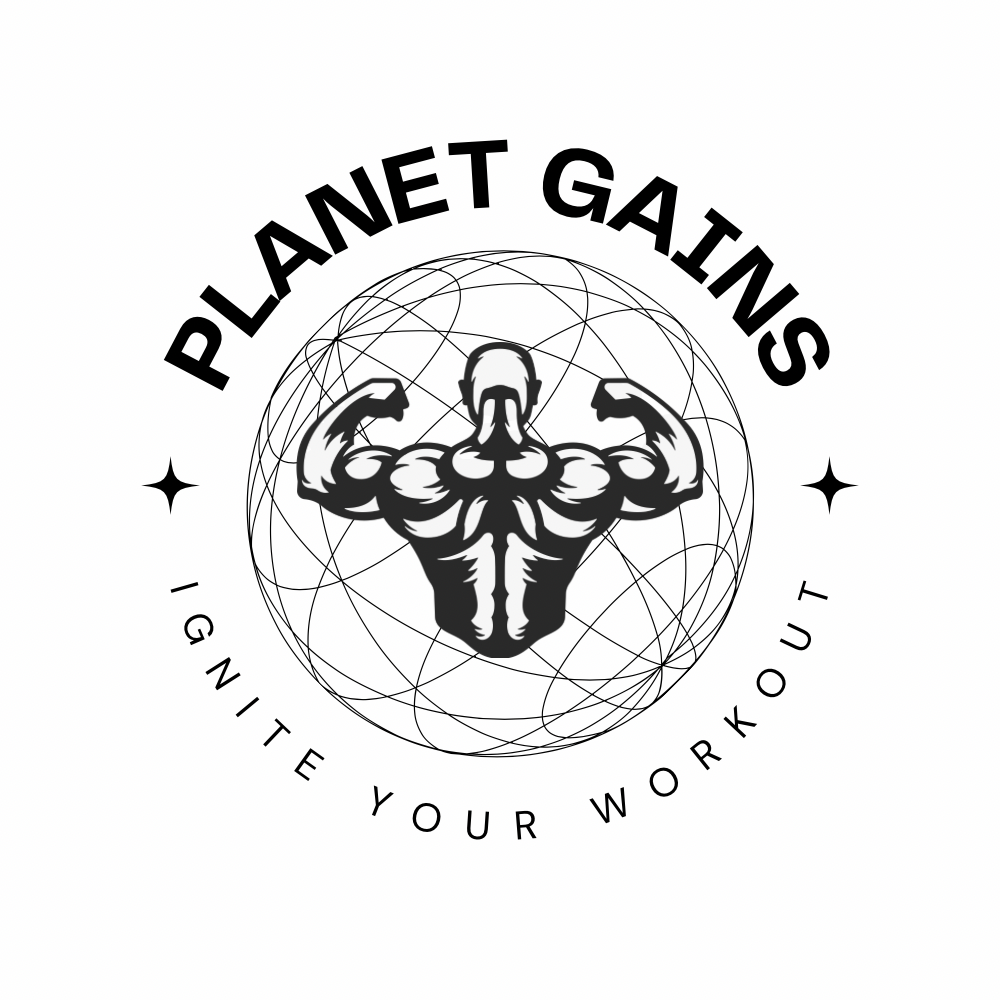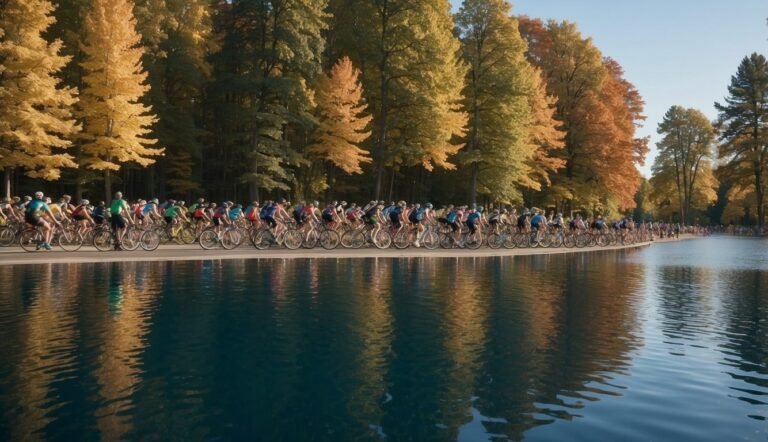📦 FREE Shipping
How Long to Train for a Triathlon: Fast-Track Race Day 2024!

I remember when I decided to train for my first triathlon—I was full of questions, especially about the length of time I’d need to properly prepare. You might ask: How Long to Train for a Triathlon?
Training time can vary widely based on your current fitness level, the distance of the triathlon, and your personal goals. For a sprint triathlon, which is the shortest standard distance, a general recommendation is to allow at least 12 weeks if you’re starting from a moderate level of fitness. This gives me ample time to get comfortable with each discipline—swimming, cycling, and running—and to build my endurance.

Experience has taught me that if I’m already quite active and have a good base in the three sports, I might be able to prep in as little as 8 weeks. It’s crucial, though, to listen to my body and adjust my training accordingly. The most extensive training weeks for a triathlon don’t need to consume my life; I might spend around four hours on my peak training week. Daily workouts can be as short as 30 to 45 minutes on weekdays with longer sessions planned for the weekend.
No matter the starting point, consistency is my best friend on this journey. Whether I’m gearing up for a shorter sprint triathlon or setting my sights on the longer Olympic or Ironman distances, the key is to remain committed and motivated throughout my training period. The exhilaration of crossing the finish line makes every minute of preparation worth it!
Determining Your Triathlon Training Timeline
I understand that preparing for a triathlon is a commitment that involves meticulous planning and a clear understanding of the time needed to be race-ready.
Setting Realistic Goals
When I set out to train for a triathlon, my first step is to establish realistic goals based on my fitness level, schedule, and the race I want to compete in. This helps me create a structured training plan that ensures I reach my desired level of performance without risking burnout or injury.
- Beginners: Typically require more time to adapt to the rigorous demands of triathlon training.
- Experienced athletes: May need less time due to a pre-existing fitness base.
My Advice: It’s essential to consider personal fitness goals and daily life commitments when creating a training timeline.
Triathlon Distances and Associated Training Times
Different triathlon distances necessitate varying amounts of training time. Here’s a quick rundown of training times I consider for each race distance:
- Sprint Triathlon: A great starting point for beginners, involves minimal time commitment, with some athletes being able to prepare in as few as 12 weeks.
- Olympic Distance Triathlon (1.5km swim, 40km bike, 10km run): Generally requires a moderate increase in training time, often around 16-20 weeks.
- Half-Ironman (1.9km swim, 90km bike, 21.1km run): Being a mid-range distance, I usually plan for at least 20 weeks of training.
- Full Ironman (3.8km swim, 180km bike, 42.2km run): The longest race distance and a massive undertaking that often requires 24 to 30 weeks of dedicated training for me.
To stay organized and aligned with my goals, I like to break down my training into weekly hours for swimming, biking, and running:
| Distance | Swim Hours/Week | Bike Hours/Week | Run Hours/Week |
|---|---|---|---|
| Sprint | 1-2 | 2-3 | 1-2 |
| Olympic | 2-3 | 3-4 | 2-3 |
| Half-Ironman | 3-4 | 4-5 | 3-4 |
| Full Ironman | 4-5 | 5-6 | 4-5 |
By considering the training time needed for each discipline, I create a balanced training regimen that prepares me effectively for the race day.
Essential Training Components for Triathlon Success

Training for a triathlon is a multifaceted endeavor that requires a well-rounded approach, focusing on a customizable training plan, balancing disciplines, ensuring adequate rest, and progressively building endurance and intensity.
Developing a Triathlon Training Plan
To be successful in triathlon, I first create a training plan tailored to my fitness level and triathlon distance goals. Whether I’m aiming for a Sprint, Olympic, 70.3, or full Ironman distance, my plan should include workouts that progressively increase in intensity and volume. Adaptability is key, as I must be ready to adjust my plan according to how my body responds to training.
- Beginners: Start with 12-20 weeks based on fitness level
- Experience: Longer or shorter phases depending on past training
Swim, Bike, Run: Balancing the Three Disciplines
I know it’s critical to balance training across swimming, biking, and running to optimize my performance. This means not only allocating time to each sport but also focusing on technique and efficiency.
- Swim: At least 2-3 sessions per week, with drills to enhance technique
- Bike: Include long rides for stamina and intervals for speed
- Run: Practice transitions to cycling; mix long runs with speed work
Incorporating Rest and Recovery
Rest and recovery are as important as the workouts themselves. I take scheduled rest days seriously to allow my muscles to repair and grow stronger. Recovery days might include:
- Active recovery: Low-intensity activities like walking or yoga
- Total rest: Complete rest to aid in muscle repair and stress relief
- Nutrition is pivotal during this phase for optimal muscle recovery
Building Endurance and Intensity
Finally, I focus on building my endurance and intensity gradually. Over the weeks, I increase the duration and intensity of my workouts, paying attention to my body’s signals to avoid injury. It’s important for me to listen to my body and respect its limits while striving to push those limits safely.
- Strength Training: Include 1-2 days of strength training to support joint health and power
- Brick Workouts: Back-to-back sessions of biking and running to simulate race conditions
I thoroughly enjoy the process of training as it is an exhilarating challenge that pushes my limits and prepares me for race day.
Equipment and Gear: Optimizing Performance
Preparing for a triathlon means I equip myself with the best gear for each segment. It’s not just about endurance—it’s about how well my equipment can complement my training and contribute to my success on race day.
Choosing the Right Triathlon Gear
When I train for a triathlon, selecting the right gear goes beyond comfort—it enhances my performance. For swimming, I ensure I have goggles that provide clear vision and don’t leak, along with a snug-fitting wetsuit that aids in buoyancy and speed without restricting my movements. Now, moving onto cycling, a reliable road bike tailored to my posture optimizes efficiency. I always check that my cycling shoes are compatible with the bike pedals and my helmet meets safety standards. Investing in a quality pair of running shoes is crucial, as it minimizes the risk of injury during the running leg. Remember, the right gear can make a difference between a good and a great race.
- Swimming Equipment: Comfortable goggles, a streamlined wetsuit
- Cycling Gear: Aerodynamic road bike, snug cycling shoes, certified helmet
- Running Equipment: Lightweight, support-focused running shoes
Transition-Specific Equipment
In triathlons, transitions are where I can gain an edge. This is why I focus on transition-specific equipment, ensuring fast switches between disciplines. Elastic laces on my running shoes shave off precious seconds. Moreover, having a race belt speeds up the process of displaying my number. For my bike, I keep my helmet and glasses in an easy-to-grab spot and practice the order of putting them on to be as efficient as possible. And a tip from my coach: rehearse in the same gear I plan to use on race day so nothing feels unfamiliar.
The Mental Game: Preparing for Race Day
In preparing for race day, the mental aspects are just as crucial as the physical. I’ve found that a focused mindset can vastly enhance performance and help me manage the intensity and endurance demands of a triathlon.
Visualization and Mental Rehearsal
I always visualize my race from start to finish. This includes imagining myself excelling at each stage—open-water swimming with strong form, transitioning smoothly, maintaining a steady pace on the road bike, and keeping a consistent stride in the run. I rehearse each moment in my head, from diving into the water to crossing the finish line. By doing so, I internalize my plan and build confidence in my ability to execute it.
Key Visualization Points:
- Form: Imagine perfect technique in swimming, cycling, and running.
- Transitions: Visualize quick, efficient transitions with clear sequences.
- Endurance: Picture myself pushing through the toughest parts with determination.
Race Day Strategies
When race day arrives, I have a clear strategy that keeps me focused and driven. My nutrition is planned to sustain energy levels, and I am ready with a safety plan for the open-water swim. I set realistic goals based on my commitment and preparation for the season. During the race, I concentrate on my triathlon goals, adapt to changes, and stay motivated, keeping in mind the specific race distance I have trained for.
Race Day Focus Points:
- Goals: Set attainable, yet challenging, race-day goals.
- Nutrition and Safety: Stick to my nutrition plan and prioritize safety, especially in open water.
- Adaptability: Remain adaptable to cope with the unexpected.
By incorporating these mental strategies, I feel better prepared for race day and excited to showcase the results of my hard work and commitment.
Frequently Asked Questions about How Long to Train for a Triathlon
Triathlon training can be an exhilarating journey, and I’m here to address some common queries to help kickstart your adventure!
What’s the best way to start training for a triathlon if I’m a complete beginner?
I recommend following a structured training plan tailored for beginners. Typically, these plans ease you into the sport with manageable workouts that gradually increase in intensity and volume.
Can you break down the different distances within triathlon training?
Sure! There are mainly four triathlon distances: Sprint, Olympic, Half Ironman (70.3), and Full Ironman. Sprint covers about half the distance of the Olympic, and the Half Ironman is roughly half the distance of a Full Ironman.
For an average person, how many months would it typically take to prepare for a triathlon?
On average, a beginner might expect to spend about 3-6 months training for a Sprint distance, and up to a year for an Ironman, depending on their base fitness level and experience.
Is it true that you can train for a sprint triathlon in just a few weeks?
Yes, if you already have a good fitness base, it’s possible to be ready for a Sprint triathlon in just 8-12 weeks.
How many hours of training per day does it usually take to get triathlon-ready?
It varies based on the race distance, but for a Sprint triathlon, you might train 4-5 hours per week, spread over several days with a mix of swimming, cycling, and running activities.
Where can I find a beginner-friendly triathlon training plan in PDF format?
Many triathlon websites and coaching services offer free downloadable plans in PDF format suitable for beginners looking to enter the sport.
Remember to listen to your body and modify your training as needed to stay healthy and motivated!
Is your question “How Long to Train for a Triathlon?” answered? Leave me a comment and make sure to also check out Triathlon Equipment and What is an Ironman Run.





